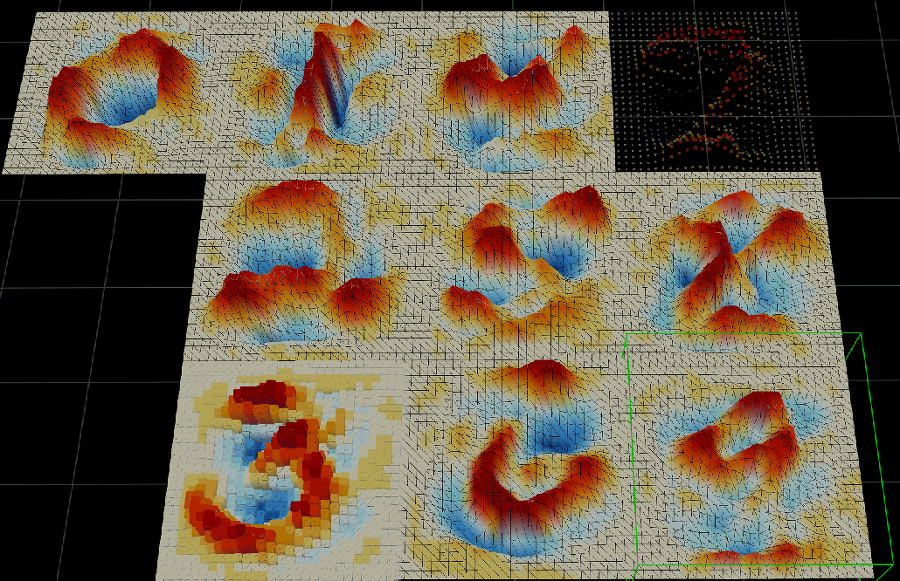MNIST linear regression
MNIST dataset을 이용하여 linear regression 알고리즘을 enuSpace-Tensorflow를 이용한 사용 방법을 설명합니다.
Python를 이용한 구현
참고 :http://www.xiaoliangbai.com/2017/02/01/tensorflow-applying-linear-regression-on-mnist-dataset
import sys
import time
import numpy as np
import tensorflow as tf
import matplotlib.pyplot as plt
from tensorflow.examples.tutorials.mnist import input_data
%matplotlib inline
%load_ext autoreload
%autoreload 2
MNIST = input_data.read_data_sets("MNIST_data", one_hot=True)
# Define parameters for linear model
learning_rate = 0.01
batch_size = 128
n_epochs = 25
# Create placeholders
X = tf.placeholder(tf.float32, [batch_size, 784], name="image")
Y = tf.placeholder(tf.float32, [batch_size, 10], name="label")
# Create weights and bias
w = tf.Variable(tf.random_normal(shape=[784, 10], stddev=0.01), name="weights")
b = tf.Variable(tf.zeros([1,10]), name='bias')
# calculate scores
logits = tf.matmul(X, w) + b
# Entropy cost function and loss
entropy = tf.nn.softmax_cross_entropy_with_logits(logits, Y)
loss = tf.reduce_mean(entropy)
# Define optimizer
optimizer = tf.train.GradientDescentOptimizer(learning_rate=learning_rate).minimize(loss)
# Run optimization and test
loss_history = []
acc_history = []
init = tf.global_variables_initializer()
with tf.Session() as sess:
sess.run(init)
n_batches = int(MNIST.train.num_examples/batch_size)
for i in range(n_epochs):
for _ in range(n_batches):
X_batch, Y_batch = MNIST.train.next_batch(batch_size)
_, loss_value = sess.run([optimizer, loss], feed_dict={X: X_batch, Y:Y_batch})
loss_history.append(loss_value)
# Check validation accuracy
n_v_batches = int(MNIST.validation.num_examples/batch_size)
total_correct_preds = 0
for j in range(n_v_batches):
X_batch, Y_batch = MNIST.validation.next_batch(batch_size)
_, loss_batch, logits_batch = sess.run([optimizer, loss, logits], feed_dict={X: X_batch, Y:Y_batch})
preds = tf.nn.softmax(logits_batch)
correct_preds = tf.equal(tf.argmax(preds, 1), tf.argmax(Y_batch, 1))
accuracy = tf.reduce_sum(tf.cast(correct_preds, tf.float32))
total_correct_preds += sess.run(accuracy)
validation_accuracy = total_correct_preds/MNIST.validation.num_examples
acc_history.append(validation_accuracy)
# Test the model
n_batches = int(MNIST.test.num_examples/batch_size)
total_correct_preds = 0
for i in range(n_batches):
X_batch, Y_batch = MNIST.test.next_batch(batch_size)
logits_batch = sess.run(logits, feed_dict={X: X_batch, Y:Y_batch})
preds = tf.nn.softmax(logits_batch)
correct_preds = tf.equal(tf.argmax(preds, 1), tf.argmax(Y_batch, 1))
accuracy = tf.reduce_sum(tf.cast(correct_preds, tf.float32))
total_correct_preds += sess.run(accuracy)
print "Test accuracy is {0}".format(total_correct_preds/MNIST.test.num_examples)
###
enuSpace-Tensorflow를 이용한 구현
Training model 1 (SoftmaxCrossEntropyWidthLogits)
아래 그리픽 모델은 SoftmaxCrossEntropyWidthLogits 객체를 이용하여 그래픽 블럭을 이용하여 각 객체의 핀정보에 대하여 연결선을 수행한 화면이다.
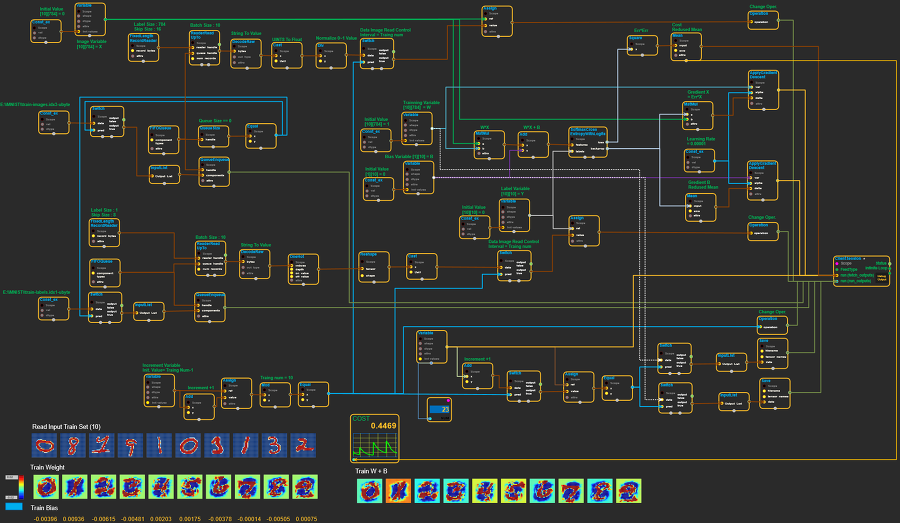
Training model (Subtract)
아래 그래픽 모델은 Subtract객체를 이용하여 그래픽 블럭을 이용하여 각 객체의 핀정보에 대하여 연결선을 수행한 화면이다.

각 블럭별 기능 설명
데이터 셋 불러오기
각 블럭중 데이터셋을 불러와 전달을 수행하기 위한 FIFOQueue , FIFOEnqueue를 활용한다. 한번에 불러올 이미지의 배치 사이즈를 설정한다. 본 모델은 100개를 적용하였다.
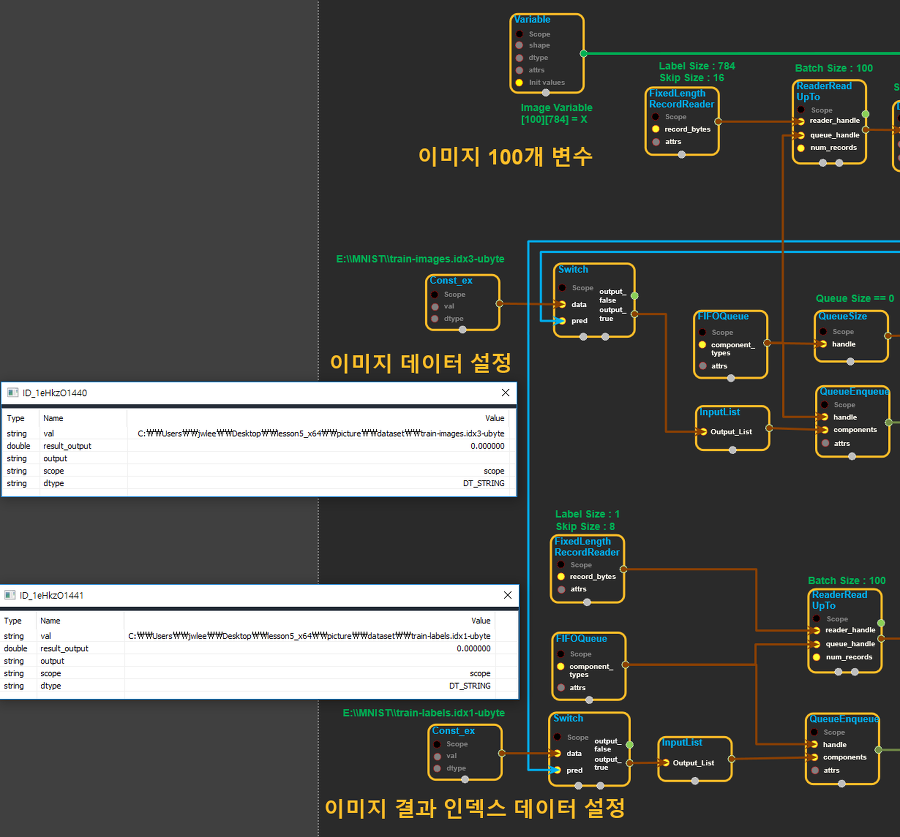
Cost값 Gradient
불러온 이미지 데이터 셋을 이용하여 Weight변수와 Bias변수를 생성하여 Cost를 경사하강법을 이용하여 Training을 수행하였다.
Traing 결과 저장
Training을 특정 개수에 도달하면, Weight와 Bias의 텐서값을 저장하기 위하여 아래그림과 같이 구성하였다.
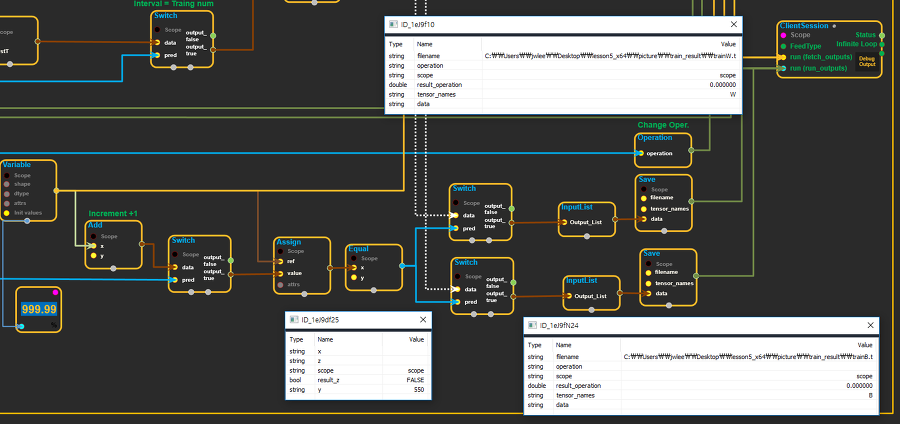
Evaluation Model
앞에서 저장된 Weight, Bias의 값을 이용하여 평가를 수행하는 모델이다.
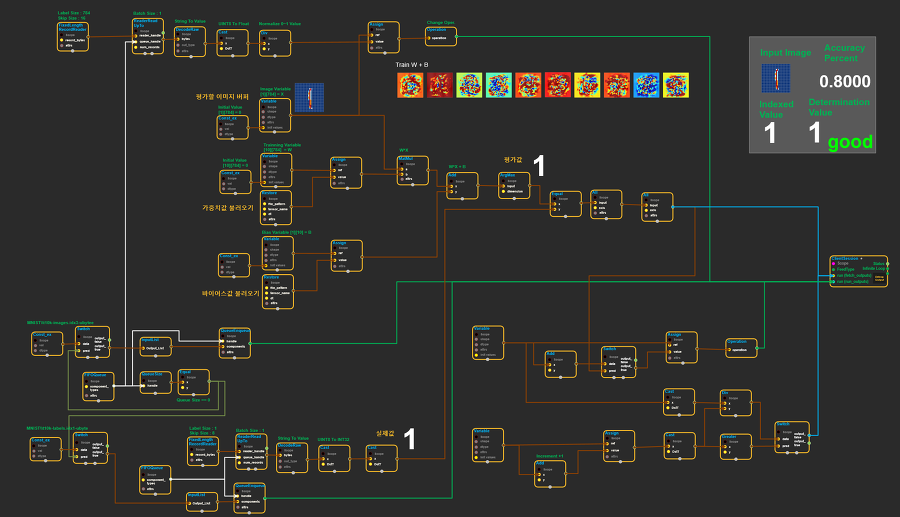
평가용 dataset 가져오기
평가를 수행하기 위해서 평가용 데이터셋의 파일 위치를 지정하여 매 실행마다 불러오기를 수행한다.
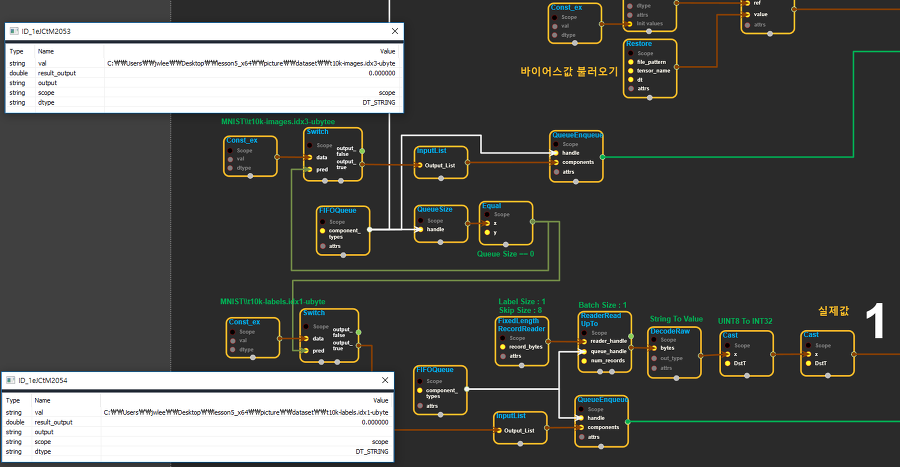
Train 결과값 불러오기
앞 Training Model에서 저장한 Weight, Bias 텐서값을 불러오는 불럭이다.

평가하기
평가용 데이터셋과 Weight, bias값을 불러왔다면 평가를 수행한다.
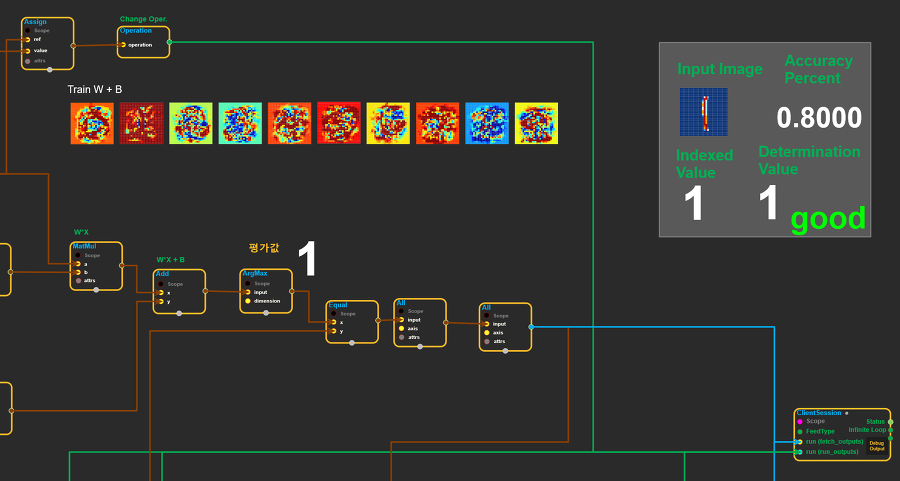
평가 결과 출력하기
평가 결과를 출력하기 위하여 Counter와 판정결과값을 확인하기 블럭을 구성하였다.
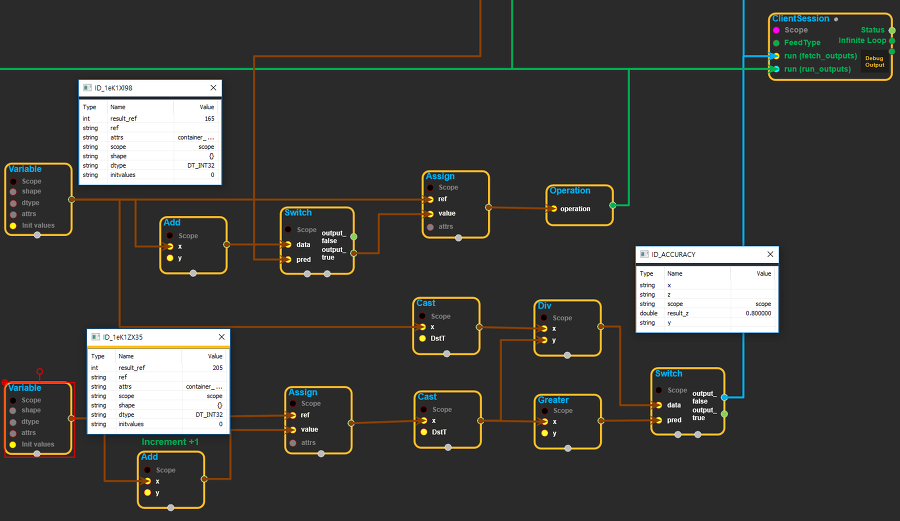
3차원 Weight값 실시간 디스플레이 {#3차원-weight값-실시간-디스플레이}
Training 과정을 확인하기 위해서 Weight값을 3차원으로 확인하기 위한 픽쳐를 생성하여 실시간 변화정보에 대하여 확인한다.
SoftmaxCrossEntropyWidthLogits 이용한 모델 결과
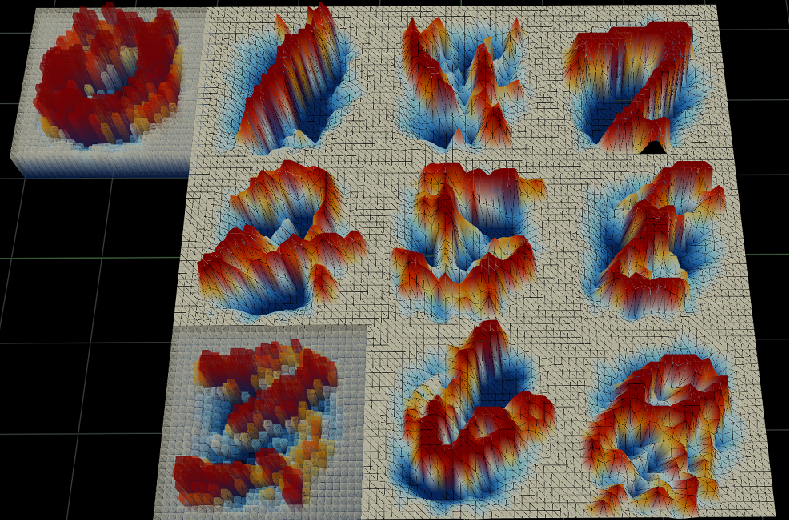
Subtract 이용한 모델 결과.
